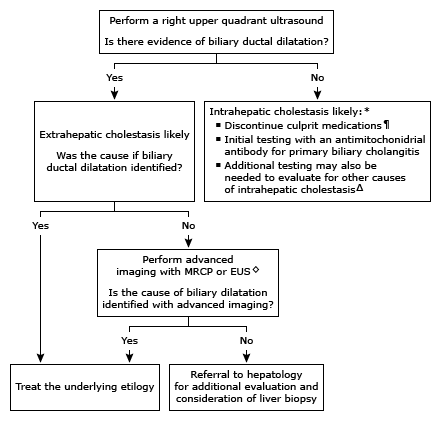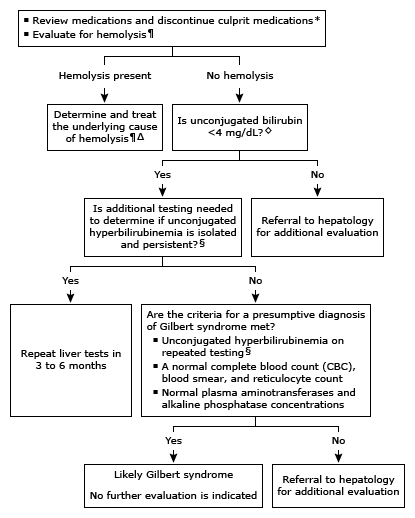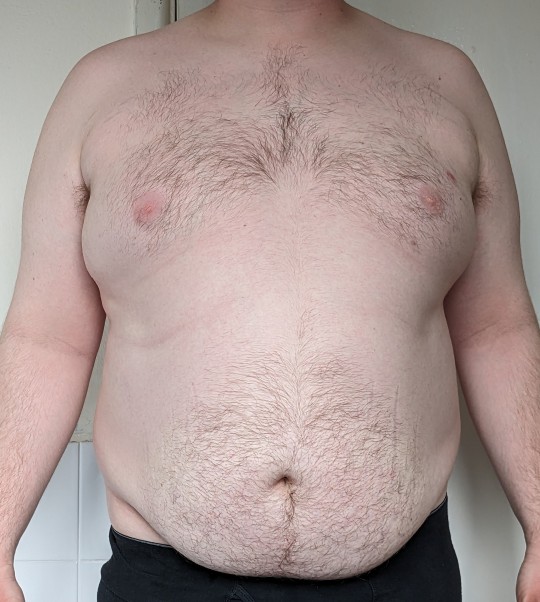#bilirubin
Audio
#bilirubin#black metal#raw black metal#2018#usa#cirrhus#furdidurke#Even Biology is Revolting Despite its Natural Appeal
16 notes
·
View notes
Text

Approach to the evaluation of an asymptomatic adult with elevated alkaline phosphatase and hyperbilirubinemia

Approach to the evaluation of an adult with isolated unconjugated hyperbilirubinemia
Classification of hyperbilirubinemia – For clinical purposes, serum bilirubin is fractionated to classify hyperbilirubinemia into one of two major categories: unconjugated (indirect) hyperbilirubinemia and conjugated (direct) hyperbilirubinemia. Unconjugated hyperbilirubinemia is characterized by plasma elevation of predominantly unconjugated (indirect) bilirubin. This may be due to the overproduction of bilirubin, impaired bilirubin uptake by the liver, or abnormalities of bilirubin conjugation. In patients with conjugated hyperbilirubinemia, both unconjugated and conjugated (direct) bilirubin are elevated. This may be due to hepatocellular disease, impaired canalicular excretion of bilirubin, or biliary obstruction.
●Historical clues – Multiple clues to the etiology of hyperbilirubinemia can be obtained from the history:
•Use of medications, herbal medications, dietary supplements, and recreational drugs
•Significant alcohol consumption (>210 grams of alcohol (15 drinks) per week in males, >140 grams of alcohol (10 drinks) per week in females
•Hepatitis risk factors (eg, travel to endemic areas, blood transfusions prior to 1992, intravenous drug use)
•History of abdominal operations, including gallbladder surgery
•History of inherited disorders, including liver diseases and hemolytic disorders
•HIV status
•Occupational or recreational exposure to toxic substances
•Associated symptoms (eg, fever, right upper quadrant pain, myalgias)
●Laboratory evaluation – Initial laboratory tests include measurements of serum total and unconjugated bilirubin, alkaline phosphatase, aminotransferases (aspartate aminotransferase and alanine aminotransferase), prothrombin time/international normalized ratio, and albumin. Subsequent testing is guided by the predominant pattern of liver injury.
●Additional testing to determine etiology of hyperbilirubinemia based on pattern of liver tests
•Conjugated hyperbilirubinemia and elevated alkaline phosphatase – Elevation of the serum alkaline phosphatase out of proportion to the serum aminotransferases suggests biliary obstruction or intrahepatic cholestasis. Testing in patients with elevated bilirubin and alkaline phosphatase of hepatic origin typically starts with right upper quadrant ultrasonography to assess the hepatic parenchyma and bile ducts (algorithm 1). The absence of biliary ductal dilatation suggests intrahepatic cholestasis.
•Conjugated hyperbilirubinemia and hepatocellular injury – A predominant elevation of serum aminotransferase activity suggests that jaundice is caused by intrinsic hepatocellular disease. The evaluation is based on the degree and pattern of aminotransferase elevation and is discussed in detail separately.
•Isolated unconjugated hyperbilirubinemia – The evaluation of unconjugated hyperbilirubinemia typically involves evaluation for hemolytic anemia, drugs that impair hepatic uptake of bilirubin, and Gilbert syndrome (algorithm 2). However, patients with unconjugated bilirubin levels ≥4 mg/dL or abnormal aminotransferases should be referred to a hepatologist for further evaluation and consideration of a liver biopsy.
•Isolated conjugated hyperbilirubinemia – Conjugated hyperbilirubinemia without other routine liver test abnormalities is found in two rare inherited conditions: Dubin-Johnson syndrome and Rotor syndrome. Normal levels of serum alkaline phosphatase and gamma-glutamyl transpeptidase help distinguish these conditions from disorders associated with biliary obstruction.
2 notes
·
View notes
Text
Day 386

#jaundice#yellow elbows#bilirubin#fatty liver disease#fatty liver#liver disease#liver failure#dailytorso#obese
5 notes
·
View notes
Text
Also, in case someone finds this in the mire: I have been living with cirrhosis for 7 years.
When I was admitted to the hospital 12/26/16, my hepatic vein was bleeding: they stapled it, and I didn’t come out of anestesia for 11 days. My MELD was 37, and I had 80+ lbs of fluid that my liver wouldn’t process. I was intubated; I was on a feeding tube. I developed TRALI, and part of my lung is still collapsed. I had to learn how to walk again, to write, and my neuropathy is still so great I can’t feel my left leg.
Here’s the really important part: I never touched a single drop of alcohol ever again. When I was released, my life expectancy was predicted 3 weeks to 3 months - because people DO keep drinking. I was a high-functioning alcoholic for 10 years, and I attempted home detox three times. I -know- the pull of addiction.
But I also recognize having to FEED an addiction, the point where it stops being enjoyable and starts becoming an necessity. I also DID NOT want to die. Coming out of that hospital without a physical addiction to feed was a gift- an absolute God-given Miracle - and I did not take it for granted.
I was placed on the transplant list, I had to go every five or six days to have the bilirubin (the fluid your liver won’t process) drained via a catheter they punched through my stomach muscles, and again: I have an absolutely non-feeling leg.
…but I didn’t drink, and the need to have fluid drained stopped, because my liver was HEALING. Three years in, they kicked me off if the transplant list because my MELD had gone from 37 to 12. Now, it’s anywhere from a 6 to an 8.
What I am saying to you is this: cirrhosis is not the death sentence it once was, and I’m proof of that. There is hope for you.
3 notes
·
View notes
Text
One of my practicals’ partners had Gilbert Syndrome and it’s just... you obviously forget about it, then, the day before a test you notice that his eyes are yellow...
He nearly gave our (hepatologist) tutor a heart attack that day
12 notes
·
View notes
Link
The Bachelor's leading man, Joey Graziadei, recently addressed concerns from viewers regarding the appearance of his eyes. In an Instagram video, Graziadei revealed he was diagnosed with Gilbert syndrome in high school, a condition that can cause a yellowish tint to the skin and eyes. Graziadei Shares His Diagnosis Story: Opening his video with an acknowledgment of the online comments, Graziadei stated, "I wanted to jump on here really quick and talk about something that I'm seeing a lot of comments about, which is Joey's yellow eyes." He then embarked on sharing the backstory of his diagnosis, taking viewers back to his high school days. A Turning Point in High School: Graziadei explained experiencing an illness lasting a week and a half, prompting his mother to seek medical attention. Blood tests revealed elevated bilirubin levels, raising concerns about potential liver issues. After undergoing consultations with various doctors and undergoing ultrasound examinations, the diagnosis of Gilbert syndrome was finally reached. What is Gilbert Syndrome? Gilbert syndrome is a common and typically harmless liver condition. It affects the liver's ability to process bilirubin, a yellowish substance produced by the breakdown of red blood cells. As a result, individuals with Gilbert syndrome may have slightly higher bilirubin levels in their blood, leading to a yellowish tinge in the skin and whites of the eyes, also known as jaundice. Addressing Fan Concerns and Taking Proactive Steps: Graziadei emphasized his overall well-being by stating, "I am told that I am healthy." He further acknowledged the impact of Gilbert syndrome on his eyes, explaining, "It's something that does affect the whites of my eyes, it makes it have those jaundice levels, which is why they look a little bit more yellow." However, Graziadei also expressed a commitment to prioritizing his health going forward. He mentioned focusing on hydration, stress management, and other healthy practices, especially considering the potential for heightened stress levels in the context of filming a reality TV show. Graziadei's Concluding Message: Wrapping up the video, Graziadei expressed his appreciation for the well-being concerns raised by fans. He reassured viewers by stating, "To my knowledge, I'm as OK as can be, and I will continue to look at it." He concluded with a sincere thank you to his viewers. Joey Graziadei's Transparency and Public Health Awareness: By openly addressing his diagnosis and explaining Gilbert's syndrome, Graziadei potentially contributes to raising public health awareness about this condition. While his specific case highlights the generally harmless nature of the syndrome, it also reminds viewers of the importance of consulting healthcare professionals regarding any health concerns. FAQs: Q: What is Gilbert syndrome? A: Gilbert syndrome is a common and typically harmless liver condition affecting the processing of bilirubin, leading to slightly elevated bilirubin levels in the blood and a potential yellowish tint in the skin and eyes. Q: Is Gilbert syndrome serious? A: Generally, Gilbert syndrome is not considered a serious condition and does not require specific treatment. However, consulting a healthcare professional is always recommended if you have any concerns about your health. Q: What are the symptoms of Gilbert syndrome? A: The primary symptom of Gilbert syndrome is mild jaundice, appearing as a yellowish tinge in the skin and whites of the eyes. However, some individuals with the condition may not experience any noticeable symptoms.
#BachelorStarJoeyGraziadel#bilirubin#diagnosis#Gilbertsyndrome#Health#jaundice#JoeyGraziadei#liver#TheBachelor
0 notes
Text
Understanding Liver Function Test
What is a liver function test?
A liver function test is a blood test that measures the levels of various enzymes and proteins in your blood. These substances are produced by the liver, and they can be a sign of liver damage or disease.
#liver function test#Bilirubin#Alkaline Phosphatase (ALP)#Aspartate Aminotransferase (AST)#and Alanine Transaminase (ALT)
0 notes
Text
Hyperbilirubinemia Risk Nomogram Calculator
Newborn hyperbilirubinemia assessment calculator is a tool for every pediatrician and concerned parent. Just fill in the few fields to see if the baby's bilirubin level is within the normal range and discover if they are at risk of developing a dangerously high level of bilirubin.
0 notes
Photo

Kim Min-ah, Alcohol Addicted Alarmed Sometimes Egg White Surprises Yellow (Body God 2)
0 notes
Text

1 note
·
View note
Text
Neonatal hyperbilirubinemia is a common phenomenon affecting most term and near-term infants and is defined as total bilirubin of greater than 1 mg/dL (17 micromol/L). In the majority of infants, the total bilirubin does not reach harmful levels and is referred to as "physiologic jaundice" or "benign hyperbilirubinemia." The cause of increased bilirubin is a combination of a higher hematocrit, higher RBC turnover, decreased bilirubin clearance, and increased enterohepatic circulation. Bilirubin levels peak around day 4-8 with levels around 7-9 mg/dL and should be unconjugated (indirect) hyperbilirubinemia. Visible jaundice usually resolves within the first 1-2 weeks. The peak levels and time to resolution may be mildly increased in Asian infants. So-called "breast milk" jaundice occurs in breast-fed infants and may result in persistent mild elevations of unconjugated bilirubin beyond the first few weeks. Similar to physiologic jaundice, breast-milk jaundice typically resolves spontaneously over time without intervention.
Infants with this type of hyperbilirubinemia require no specific intervention as it usually resolves as bowel activity increases. It is important to measure both conjugated (direct) and unconjugated bilirubin as conjugated hyperbilirubinemia is abnormal and should result in additional diagnostic investigation. In addition, when total bilirubin exceeds 25 mg/dL, infants are at risk for potentially lethal kernicterus. Therefore, phototherapy is used if infants have risk factors for severe hyperbilirubinemia or if levels exceed the range of physiologic jaundice. Levels exceeding 20 mg/dL should prompt an exchange transfusion.
Bottom Line: Physiologic jaundice occurs in most newborns and manifests as mild unconjugated hyperbilirubinemia and jaundice. It usually resolves within 1-2 weeks without treatment.
Unconjugated hyperbilirubinemia may be physiologic. Conjugated hyperbilirubinemia is never physiologic.
3 notes
·
View notes
Text
Bilirubin Test
Jaundice is a condition where a person skin and eyes turn yellow. It is a medical term to define this phenomenon. While most people think that jaundice is an illness, that is not so. Jaundice is actually a symptom of many different types of underlying medical conditions. Jaundice happens when there is an excess of Bilirubin in the body. In case you notice that you have jaundice, getting a Jaundice Test can be vital to understanding your symptoms and take the necessary treatment. You can book a Jaundice Test in Hyderabad easily and get yourself tested without any hassles. A Jaundice Test can help both in assessing if your Bilirubin levels are high as well as the cause of your symptoms so that the right treatment can be administered and the condition can be resolved at the earliest. A Jaundice Test generally includes a Serum Bilirubin Test and Urine Test along with a Blood Test. The phlebotomist takes your blood sample, which takes only a few minutes. The sample is then sent to the lab to perform the tests included in a Diagnostic Test for Jaundice.
1 note
·
View note
Photo

As a Postpartum Doula I am often the first person to provide hands on help and support with a new family. Postpartum support should ideally start from the moment you get home, which is why I have so much experience of helping families navigate this particular problem. Many of my clients (in fact most) come home from hospital with babies that have borderline jaundice results; but what I have noticed is that none of them are given actionable guidance and advice for the first 72 - 96 hours (3 - 4 days) at home prior to their first paediatrician appointment. See the 🔗 in the bio to my latest article for the SIMPLEST (truly simple!) TOP TIP for helping to reduce anxiety over jaundice in those first few days at home Reducing a borderline jaundice test result in the first few days at home can be critical to avoid further medical interventions Just one simple piece of advice about feeding could seriously help you avoid a lot of worry Head to the bio and click the 🔗 for the article and make sure you subscribe to get the next super useful article straight to your inbox EMPOWA YOUR MOTHERHOOD #jaundice #bilirubin #phototherapy #frequentfeeding #bloodtransfusion #breastfeeding #bottlefeeding #newborn #newbornjaundice #newmum #newdad #firsttimemum #sgmum #sgmummies #sgparents #fourthtrimester#empowasg #empowayourmotherhood #postpartumdoula #postpartumconsultant #postpartumcheckup #paediatrician #paediatricianappointment #newbornwellnesscheck (at Singapore / Singapura / 新加坡 / சிங்கப்பூர்) https://www.instagram.com/p/CqaOWUGyGFr/?igshid=NGJjMDIxMWI=
#jaundice#bilirubin#phototherapy#frequentfeeding#bloodtransfusion#breastfeeding#bottlefeeding#newborn#newbornjaundice#newmum#newdad#firsttimemum#sgmum#sgmummies#sgparents#fourthtrimester#empowasg#empowayourmotherhood#postpartumdoula#postpartumconsultant#postpartumcheckup#paediatrician#paediatricianappointment#newbornwellnesscheck
0 notes
Text

Within the intricate fabric of healthcare, comprehensive health checkups play a crucial role in early detection and holistic management of diverse health conditions, including those impacting the liver. Recognizing the vital function of these evaluations in protecting liver health offers a nuanced perspective on preventative care.
1. Liver Function Assessments (LFAs): Integral to full body health evaluations, liver function assessments serve as pivotal indicators of the liver's well-being. These include markers such as alanine transaminase (ALT), aspartate transaminase (AST), alkaline phosphatase (ALP), and bilirubin levels. Elevated levels of these markers act as early indicators, prompting further exploration into potential liver issues.
2. Diagnostic Imaging: Inclusive of advanced imaging techniques like ultrasound, computed tomography (CT), and magnetic resonance imaging (MRI), comprehensive health checkups offer detailed insights into the liver's structure, revealing abnormalities like cirrhosis, tumors, or fatty deposits.
3. Screening for Viral Hepatitis: Acknowledging the substantial impact of viral hepatitis on liver health, health assessments often include screenings for hepatitis B and C. Early detection allows for timely intervention, potentially preventing progression to chronic hepatitis and cirrhosis.
4. Metabolic Health Evaluation: The interconnectedness of metabolic health and liver function necessitates a holistic approach. Assessing parameters like cholesterol levels, blood glucose, and body mass index (BMI) aids in identifying risk factors for non-alcoholic fatty liver disease (NAFLD) and metabolic syndrome.
5. Genetic Predisposition Analysis: Full body health assessments provide an opportune time to explore genetic predispositions for liver-related conditions. Understanding familial tendencies towards conditions like hemochromatosis or Wilson's disease allows for proactive measures to mitigate risks.
6. Personalized Counseling on Nutrition and Lifestyle: Comprehensive health assessments go beyond diagnostics to include personalized counseling on nutrition and lifestyle. Addressing dietary patterns, alcohol consumption, and physical activity fosters a proactive approach to liver health, mitigating risk factors associated with liver diseases.
7. Preventive Vaccination Strategies: Health assessments serve as a platform for preventive healthcare, including discussions on vaccination strategies. Vaccines against hepatitis A and B play a crucial role in protecting against viral infections that can lead to liver damage and cirrhosis.
8. Long-Term Monitoring: The iterative nature of full body health assessments facilitates long-term monitoring of liver health. Regular screenings enable healthcare professionals to track changes over time, intervene promptly in the event of emerging issues, and tailor ongoing care based on an individual's health trajectory.
In essence, comprehensive full body health checkups emerge as a cornerstone in the proactive management of liver health and the prevention of liver-related complications.
#liver disease#liver function tests#bilirubin#viral hepatitis#hepatitis#CT scans#MRI scans#fatty liver disease#wilson's disease#hemochromatosis#screening tests#full body health checkups#regular health checkups
0 notes
Text
What are Gallstones?
Gallstones are one of the major causes that lead to hospitalization. Gallstones are formed within your gallbladder. The gallbladder is a small pear-shaped organ on the right side of the abdomen, just below the liver. The gallbladder stores a fluid called bile, which is a digestive juice formed by the liver and helps in the digestion process. It breaks down fats into fatty acids. The majority…

View On WordPress
#Acute cholecystitis#asymptomatic#bile#bilirubin#blockage of bile duct#Blockage of pancreatic duct#causes of gallstones#cholelithiasis#Cholesterol#cholesterol gallstones#colic or spasmodic pain#Complications associated with gallstones#crystalization of cholesterol and calcium salts#digestion process#digestive problems#Gallbladder#heartburn#indigestion#Liver#Obesity#Peritonitis#pigment gallstones#Preventing gallstones#Risk factors for gallstones#Signs and symptoms
0 notes
Text
No F this I am done
Some people don’t deserve to be parents
I am on yet another day and half shift and this 12 day old baby just came in with her bilirubin sky high and her weight super low (she’s still at birth weight and had lost weight since her fifth day of life) because THE FREAKING SHITS THAT CALL THEMSELVES HER PARENTS had been only breastfeeding her for 10 minutes every 3 hours and topping up with 20ml of formula BY CUP AND NOT BY BOTTLE and she’s so severely dehydrated she’s PEEING ONLY ONCE EVERY TWELVE HOURS
AND GUESS WHAT THE TOILET STAIN OF A FATHER SAID WHEN I WAS LIKE WHAT THE HECK DO YOU THINK A 12 DAY OLD BABY CAN DO WITH A CUP OF MILK
He was like Huh? I thought it was ok. The baby didn’t like drinking milk it’s not my fault
THIS IS THEIR SECOND CHILD HOW IS THE FIRST EVEN FREAKING ALIVE
#medicine#paediatrics#residency#pediatrics#how obsessed must you be with breastfeeding to starve your child for it#they thought giving a bottle meant the kid would never return to breastfeeding apparently#I’m so mad#I can’t yell at them in the ward because professionalism but I told the dad off very sternly#the mother’s not here because only one gets to stay with the baby#I’m like you don’t get a freaking choice feed effing formula now#medical happenings#my post#this shift started out ok initially and I even posted a new chapter#but like 16 hours in this happens and I am reminded paediatrics also gets a steady stream of cases#from FREAKING IDIOTS WHO SHOULDN’T HAVE PROCREATED#END YOUR FREAKING LINE#like the worst thing is this isn’t prosecutable because they’ll claim stupidity and the evidence points to that#dunno man I’m just gonna try to sleep it 12:30 am watch this they’re gonna call me im half an hour saying her bilirubin is stratospheric
31 notes
·
View notes